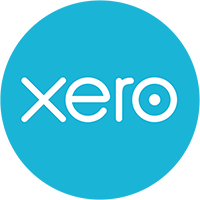Owners often ask us how much their business is worth! The follow up question is almost always; how do I improve on that value. The answer lies in understanding the valuation methodologies and drivers of value in your specific business.
Typically, but not always, the value of your business is worked out using a methodology called the ‘capitalisation of future maintainable earnings’. This methodology is summarised in a simple equation:
Future Maintainable Earnings [FME ] x Capitalisation Multiple = Business Value
future maintainable earnings
FME is exactly what the name suggests: the future earnings that you expect your business can continue to generate on a maintainable basis going forward.
Yes, historical profits are often used as the starting point for determining the FME, but it’s not the only way to determine your FME.
capitalisation multiple/rate
The capitalisation multiple represents the multiple of FME someone is willing to pay for your business. Three key factors include:
- Risk free rate of return at the date of the valuation and broader macro-economic conditions for businesses of that size
- The opportunities to increase future business earnings
- The risks specific to your business and industry that could decrease future earnings
The inverse of your capitalisation multiple is your capitalisation rate. For example, a 3 times cap multiple is the equivalent of a 33% cap rate [still the most common ballpark cap rate used for small to medium enterprises].
The way I like to think about the cap rate is; if I was to buy this business, what return on investment would I require after taking into account:
- The cost of capital and/or debt to purchase the business
- The risk inherent within the business, and
- The opportunity to grow the business and its earnings
improving the value of your business
Not everyone likes the answer we give them when we value their business.
Some want the value to be higher for sale or merger considerations and some want it lower because it might be better for tax purposes. That’s why we like to do what we call ‘indicative valuations’ where we provide a range of values and details on the key drivers that either increase or decrease the value of the business.
These are the valuations I love to do the most – not only because these have less stringent compliance and regulatory requirements from the professional accounting standards – but because they give the business owner a guide on what they need to do to improve the value of the business.
So given the above, to increase the value of your business, you can focus on either improving the FME [earnings] of the business or increasing the capitalisation multiple of the business.
Most people can get their head around how to improve the earnings of the business [because it’s basic business 101 – as follows]:
- Improve the income [without an equivalent increase in costs]
- Reduce the fixed costs of the business [that enables the business to generate that level of income]
However, getting your head around how to increase the capitalisation multiple of a business isn’t as straight forward.
There are a stack of risks and opportunities we take into account when setting the capitalisation multiple for your business.
here’s some areas you can focus on to improve your multiple and ultimately your business value
1. consistency of earnings
The more consistent past earnings, the certainty that they will continue on that same basis into the future [subject to material changes in the business or industry of course].
If you can demonstrate your earnings are truly ‘maintainable’, you reduce the perceived risk of future drops in profit – and I know I personally, would be willing to pay more for that business.
2. recurring revenue
One of the ways to show you have consistent earnings is by having a business with recurring or even contracted, locked-in revenue. Saas businesses are a prime example that has recurring income, as is a property management business. For other industries, it’s a good idea to try locking clients into more contractual arrangements, moving them to retainers or just make sure you can report on the loyal customers that come back for more.
Remember: The more recurring and contracted revenue you have, the less likely your earnings will drop when ownership changes – and that’s music to a buyer’s ears.
3. point of difference
Business acquirers only buy what they could not easily create themselves at a lower cost. So, expect to be paid more if you have close to a monopoly on what you sell and/or are one of the few businesses who have been licensed to provide the specific product or service in your market.
Standing out from the crowd with a strong point of difference makes you unique and will demand a higher capitalisation multiple.
4. have a growth plan
A buyer wants to know that the business has a positive future and opportunities to improve earnings. You’ll never get a price for a business if it’s already in decline. Make sure it is on a growth trajectory to maximise the cap multiple you can justify.
Documenting your business growth goals, the activities required to achieve them and preparing forecasts, helps buyers understand what the future can look like, especially when you can show data to support that it’s on track and going to eventuate.
The more data and documentation you have on these plans, the better!
5. quality, timeliness and reliable financials
The quality, timeliness and reliability of the information that is presented to buyers can make or break a sale. Up-to-date and well-presented information is essential. Being organised and able to respond to a buyer’s queries in a timely manner builds confidence in the operation of the business and the quality of the information being presented. A business with good quality financial controls and systems reduces the risk of the information relied upon being incorrect and generally portrays the ‘vibe’ that this is a well-run business.
6. reliance on you
The number one factor that typically reduces the capital multiple of your business and therefore the value of the business, is YOU!
Yes, you’ve done an amazing job building your business [maybe even from scratch]. But, if the business is reliant on you, this is a huge risk for a buyer.
The most valuable businesses can thrive without their owners. Prove to the buyer that the business does not rely on you. Have an organisational structure that shows how the business operates, and a succession plan to prove that the business can be successful without you.
7. barriers to entry
The higher the barriers to entry, the harder it is for someone else to start a similar business. Maybe your industry needs certain licenses to operate? Maybe you provide a highly regulated service? Maybe the business is hugely capital intensive? The bigger the barrier to entry, the harder it is for someone to start and get traction in the industry, the better for your capitalisation multiple.
Most barriers to entry are industry-related, but they can also be specific to your business such as having a strong brand, a great location or access to equipment unique to your offering.
8. bargaining power of suppliers
Do you rely on one supplier for a critical input to your business? If so, you have risk that’s well out of your control and will be taken into account setting your capitalisation multiple.
Spread the risk with multiple suppliers and maximise your power when negotiating on price. It may even be worth finding a way to source the input yourself and cutting out the middleman.
The above are just some of the factors considered when setting a capitalisation multiple / rate.
side note: don’t forget about the Balance Sheet!
This blog specifically focuses on the value of your business rather than the value of your goodwill. Your goodwill can also be impacted by how you have funded your business and the amount of capital you have tied up in your business.
A ‘lazy’ Balance Sheet is not appealing to a buyer and a valuation will reflect this in the value assigned to your goodwill versus the other assets included in the value of your business. To find out more on the difference between the value of your business and value of your goodwill, check out this blog.
additional comments
When it comes to looking at the value of your business, there are many ways you can do that, including;
- A full-blown valuation opinion with detailed report
- Indicative valuations where you are provided a range of values
- Limited scope valuations where you provide instructions on a particular component of the value considerations
- Valuation critique where we review and provide comments on someone else’s valuation
- Value calculations when you already have an agreed formula [e.g. a shareholders agreement]
- Suggesting a value methodology to include in important documents, such as shareholders agreements
If you’re wondering how much your business is worth or need some help improving your business value, please reach out to our valuation experts John Knight or Bradley Dean.
get more insights
If you found this article useful and you’d like to get more information on business valuations sign up to our mailing box here!




















































